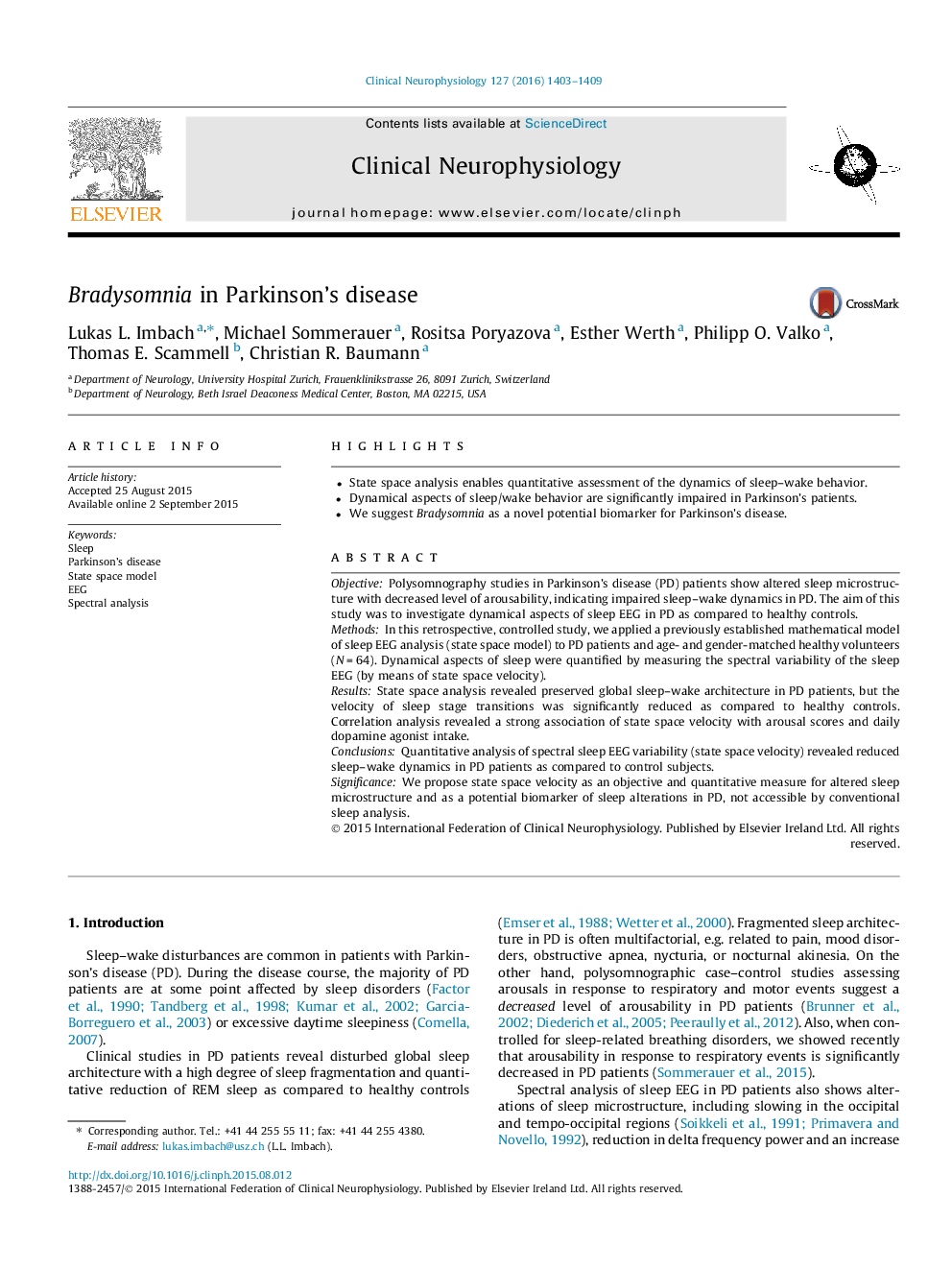| Article ID | Journal | Published Year | Pages | File Type |
|---|---|---|---|---|
| 6007604 | Clinical Neurophysiology | 2016 | 7 Pages |
â¢State space analysis enables quantitative assessment of the dynamics of sleep-wake behavior.â¢Dynamical aspects of sleep/wake behavior are significantly impaired in Parkinson's patients.â¢We suggest Bradysomnia as a novel potential biomarker for Parkinson's disease.
ObjectivePolysomnography studies in Parkinson's disease (PD) patients show altered sleep microstructure with decreased level of arousability, indicating impaired sleep-wake dynamics in PD. The aim of this study was to investigate dynamical aspects of sleep EEG in PD as compared to healthy controls.MethodsIn this retrospective, controlled study, we applied a previously established mathematical model of sleep EEG analysis (state space model) to PD patients and age- and gender-matched healthy volunteers (NÂ =Â 64). Dynamical aspects of sleep were quantified by measuring the spectral variability of the sleep EEG (by means of state space velocity).ResultsState space analysis revealed preserved global sleep-wake architecture in PD patients, but the velocity of sleep stage transitions was significantly reduced as compared to healthy controls. Correlation analysis revealed a strong association of state space velocity with arousal scores and daily dopamine agonist intake.ConclusionsQuantitative analysis of spectral sleep EEG variability (state space velocity) revealed reduced sleep-wake dynamics in PD patients as compared to control subjects.SignificanceWe propose state space velocity as an objective and quantitative measure for altered sleep microstructure and as a potential biomarker of sleep alterations in PD, not accessible by conventional sleep analysis.
